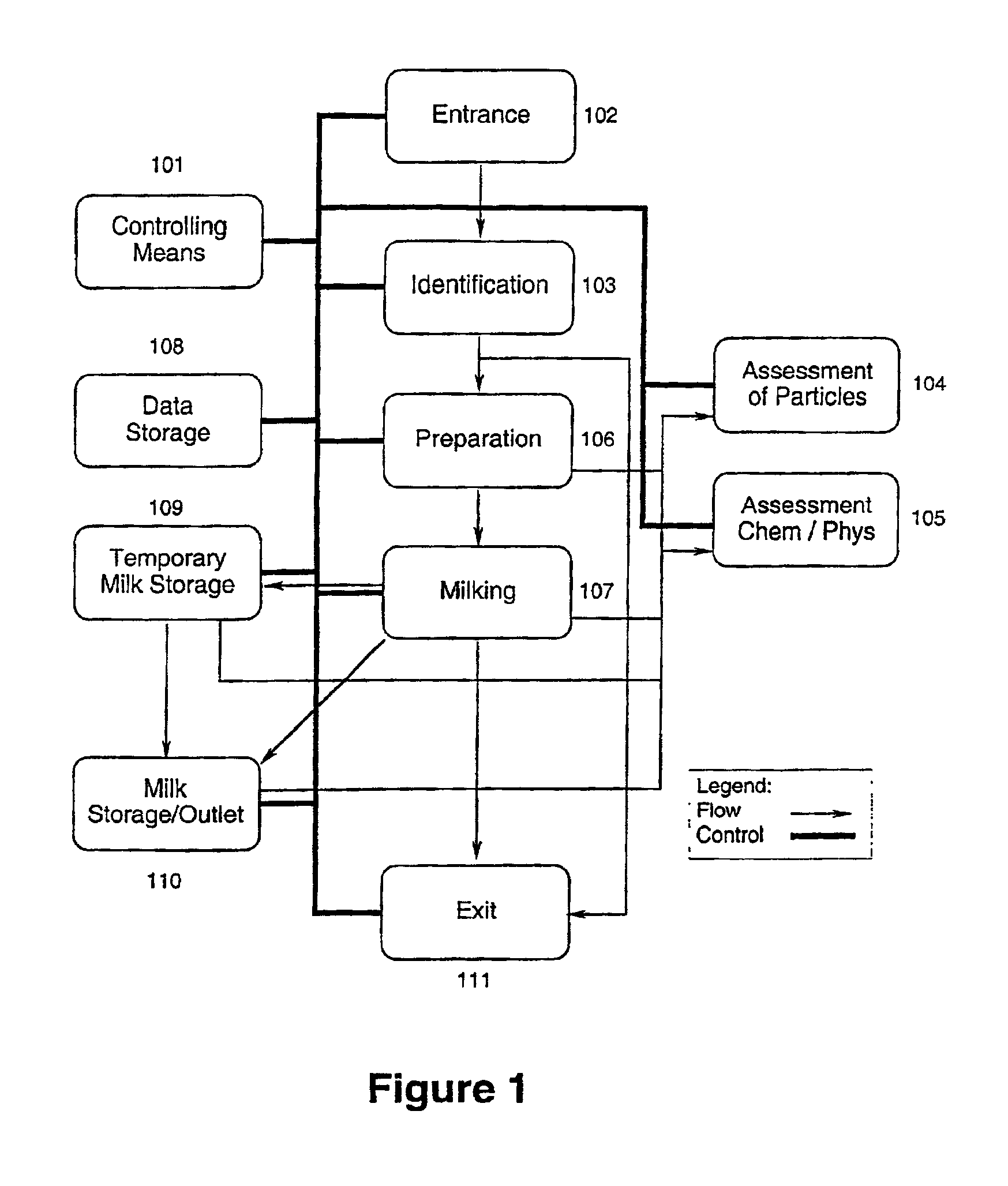System for regulating the handling of milk during the milking process and a method for regulating said milking process
a technology of milk processing and milk processing equipment, which is applied in the field of system for regulating the handling of milk during the milking process and a method for regulating the milking process, can solve the problems of inability to accurately and reliably assess the quality of milk by means of optical sensors, not particularly accurate or unsuitable for use in an automated milking system, and inability to accurately and reliably assess the quality of milk
- Summary
- Abstract
- Description
- Claims
- Application Information
AI Technical Summary
Benefits of technology
Problems solved by technology
Method used
Image
Examples
example 1
A Method and a System for Controlling Milk Handling During Milking
[0105]FIG. 1 illustrates a method and a system for the handling of milk during milking including embodiments of the present invention. The method and the system are with the appropriate modifications applicable for milking where the milking is supervised manually and also for milking where the milking is automatically supervised and controlled. FIG. 1 shows the flow of milk and / or the animal being milked as well as the flow of information and / or control.
[0106]The animal being milked enters the milking system through the entrance 102, which can either be a physical entrance, e.g. to a automatic milking system, or an imaginary entrance / initiation of / to the milking system. The entrance can be controlled by controlling means 101. Then the animal is identified by identification means 103 and the results of the identification are made available to the controlling means. Based on the identification, and preferably also other...
example 2
Principle for the Assessment of the Number of Particles in a Volume of Milk According to the Present Invention
[0112]One method of assessing particles in milk according to the invention is described in the following.
[0113]The milk solution is placed in the sample compartment by use of a peristaltic pump that is situated down-stream from the sample compartment. A valve is placed in the flow system immediately adjacent to the sample compartment in order to reduce the movement of the sample in the sample compartment.
[0114]The assessment of the number of particles in a volume of milk is performed on an instrument according to the present invention, equipped with an excitation module comprising a halogen light source, OSRAM-64255 (8V, 20W Photo Optic Lamp), an optical filter, Ferroperm SWP550 (double sided interference filter on a 2 mm substrate (Hoye, BG-39) which absorbs infra-red radiation) and a heat absorbing filter, (Schott KG5, 3 mm in thickness), and a detection module comprising ...
PUM
| Property | Measurement | Unit |
|---|---|---|
| diameter | aaaaa | aaaaa |
| volume | aaaaa | aaaaa |
| volume | aaaaa | aaaaa |
Abstract
Description
Claims
Application Information
 Login to View More
Login to View More - R&D
- Intellectual Property
- Life Sciences
- Materials
- Tech Scout
- Unparalleled Data Quality
- Higher Quality Content
- 60% Fewer Hallucinations
Browse by: Latest US Patents, China's latest patents, Technical Efficacy Thesaurus, Application Domain, Technology Topic, Popular Technical Reports.
© 2025 PatSnap. All rights reserved.Legal|Privacy policy|Modern Slavery Act Transparency Statement|Sitemap|About US| Contact US: help@patsnap.com

